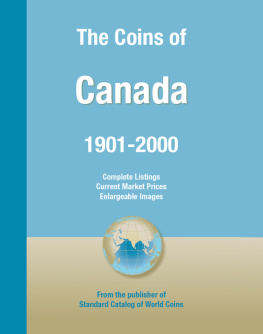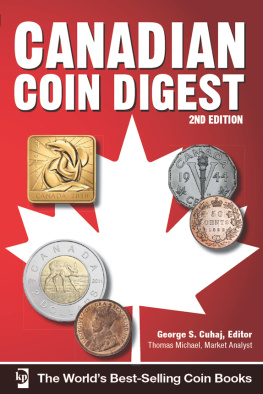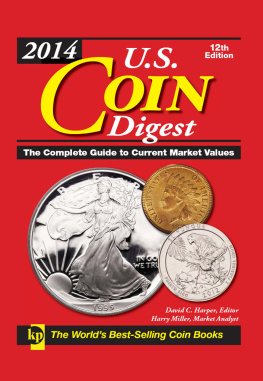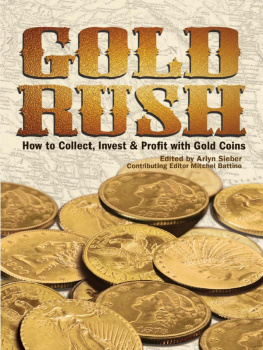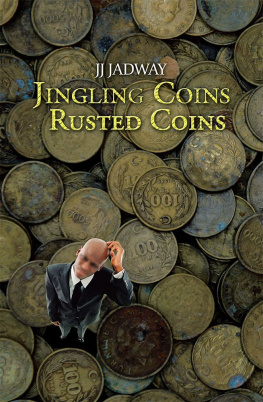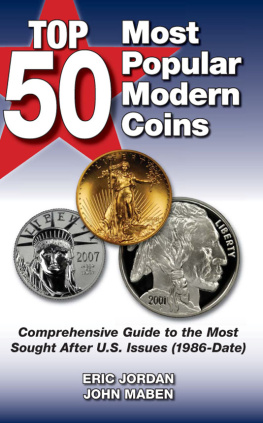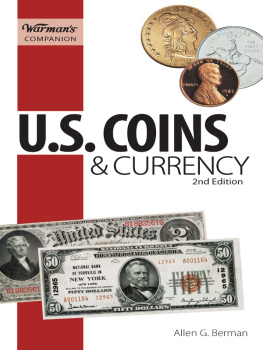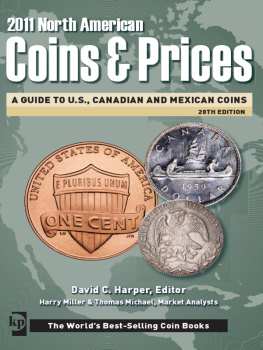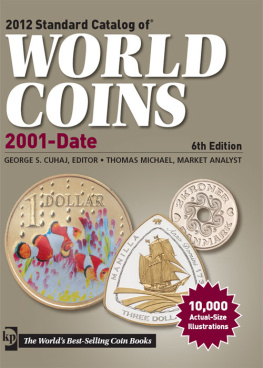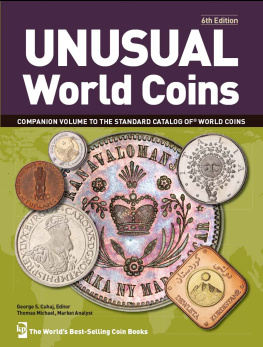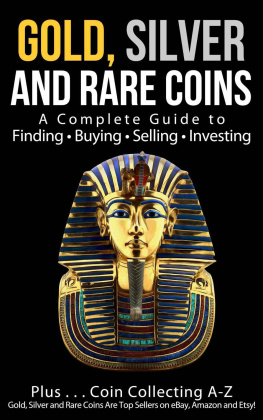The Coins of
Canada
1901-2000
Complete Listings
Current Market Prices
Enlargeable Images

From the publisher of
Standard Catalog of World Coins

Canada is located to the north of the United States, and spans the full breadth of the northern portion of North America from Atlantic to Pacific oceans, except for the State of Alaska. It has a total area of 3,850,000 sq. mi. (9,971,550 sq. km.) and a population of 30.29 million. Capital: Ottawa.
Jacques Cartier, a French explorer, took possession of Canada for France in 1534, and for more than a century the history of Canada was that of a French colony. Samuel de Champlain helped to establish the first permanent colony in North America, in 1604 at Port Royal, Acadia - now Annapolis Royal, Nova Scotia. Four years later he founded the settlement in Quebec.
The British settled along the coast to the south while the French, motivated by a grand design, pushed into the interior. Frances plan for a great American empire was to occupy the Mississippi heartland of the country, and from there to press in upon the narrow strip of English coastal settlements from the west. Inevitably, armed conflict erupted between the French and the British; consequently, Britain acquired Hudson Bay, Newfoundland and Nova Scotia from the French in 1713. British control of the rest of New France was secured in 1763, largely because of James Wolfes great victory over Montcalm near Quebec in 1759.
During the American Revolution, Canada became a refuge for great numbers of American Royalists, most of whom settled in Ontario, thereby creating an English majority west of the Ottawa River. The ethnic imbalance contravened the effectiveness of the prevailing French type of government, and in 1791 the Constitutional act was passed by the British parliament, dividing Canada at the Ottawa River into two parts, each with its own government: Upper Canada, chiefly English and consisting of the southern section of what is now Ontario; and Lower Canada, chiefly French and consisting principally of the southern section of Quebec. Subsequent revolt by dissidents in both sections caused the British government to pass the Union Act, July 23, 1840, which united Lower and Upper Canada (as Canada East and Canada West) to form the Province of Canada, with one council and one assembly in which the two sections had equal numbers.
The union of the two provinces did not encourage political stability; the equal strength of the French and British made the task of government all but impossible. A further change was made with the passage of the British North American Act, which took effect on July 1, 1867, and established Canada as the first federal union in the British Empire. Four provinces entered the union at first: Upper Canada as Ontario, Lower Canada as Quebec, Nova Scotia and New Brunswick. The Hudson Bay Companys territories were acquired in 1869 out of which were formed the provinces of Manitoba, Saskatchewan and Alberta. British Columbia joined in 1871 and Prince Edward Island in 1873. Canada took over the Arctic Archipelago in 1895. In 1949 Newfoundland came into the confederation.
In the early years, Canadas coins were struck in England at the Royal Mint in London or at the Heaton Mint in Birmingham. Issues struck at the Royal Mint do not bear a mint mark, but those produced by Heaton carry an "H". All Canadian coins have been struck since January 2, 1908, at the Royal Canadian Mints at Ottawa and recently at Winnipeg except for some 1968 pure nickel dimes struck at the U.S. Mint in Philadelphia, and do not bear mint marks. Ottawas mint mark (C) does not appear on some 20th Century Newfoundland issues, however, as it does on English type sovereigns struck there from 1908 through 1918.
Canada is a member of the Commonwealth of Nations. Elizabeth II is Head of State as Queen of Canada.
RULER
British 1763
MONETARY SYSTEM
1 Dollar = 100 Cents
CONFEDERATION
CIRCULATION COINAGE

KM # 7 CENT 5.7000 g. Bronze Ruler: Victoria Obv.: Crowned head left within beaded circle
Obv. Leg.: VICTORIA DEI GRATIA REGINA. CANADA Obv. Des.: Leonard C. Wyon Rev.:
Denomination and date within beaded circle, chain of leaves surrounds Edge: Plain Size: 25.5 mm.


KM # 8 CENT 5.6000 g. Bronze Ruler: Edward VII Obv.: Kings bust right within beaded circle Obv. Des.: G. W. DeSaulles Rev.: Denomination above date within circle, chain of leaves surrounds Edge: Plain Size: 25.5 mm.


KM # 15 CENT 4.5400 g. Bronze Ruler: George V Obv.: Kings bust left Obv. Des.: E. B. MacKennal Rev.: Denomination above date within beaded circle, chain of leaves surrounds Edge: Plain Size: 25.5 mm.


KM # 21 CENT 5.6200 g. Bronze Ruler: George V Obv.: Kings bust left Obv. Des.: E. B. MacKennal Rev.: Denomination above date within beaded circle, chain of leaves surrounds Edge: Plain Size: 25.5 mm.


KM # 28 CENT 3.2400 g. Bronze Ruler: George V Obv.: Kings bust left Obv. Des.: E. B. MacKennal Rev.: Denomination above date, leaves flank Rev. Des.: Fred Lewis Edge: Plain Size: 19.10 mm.


